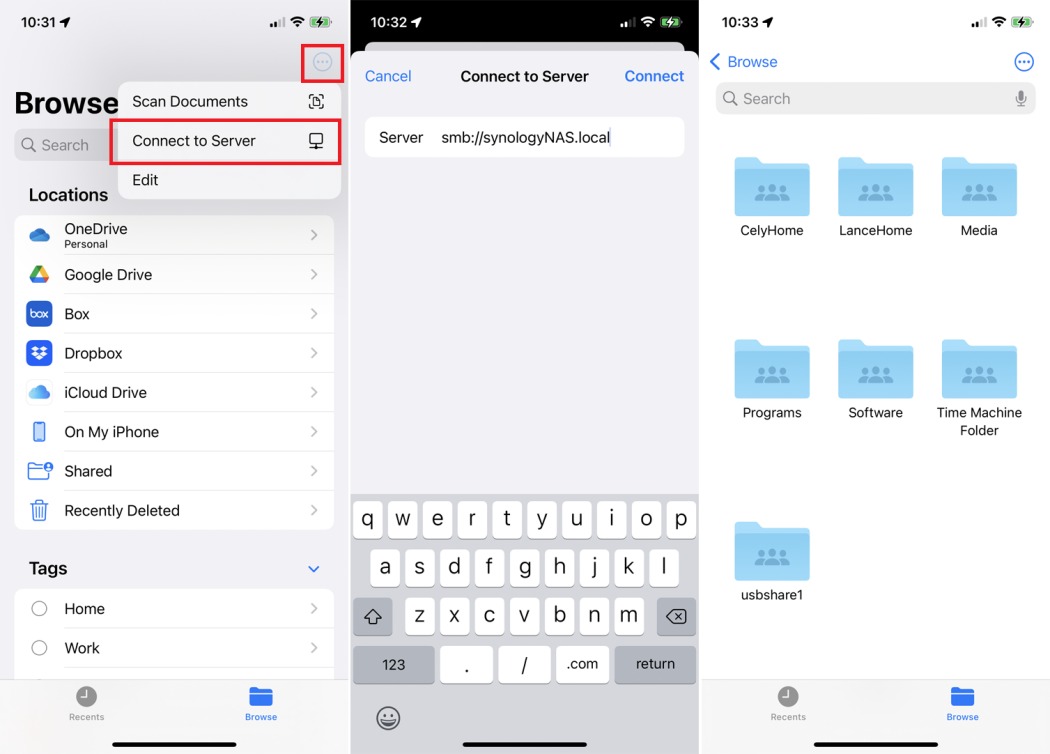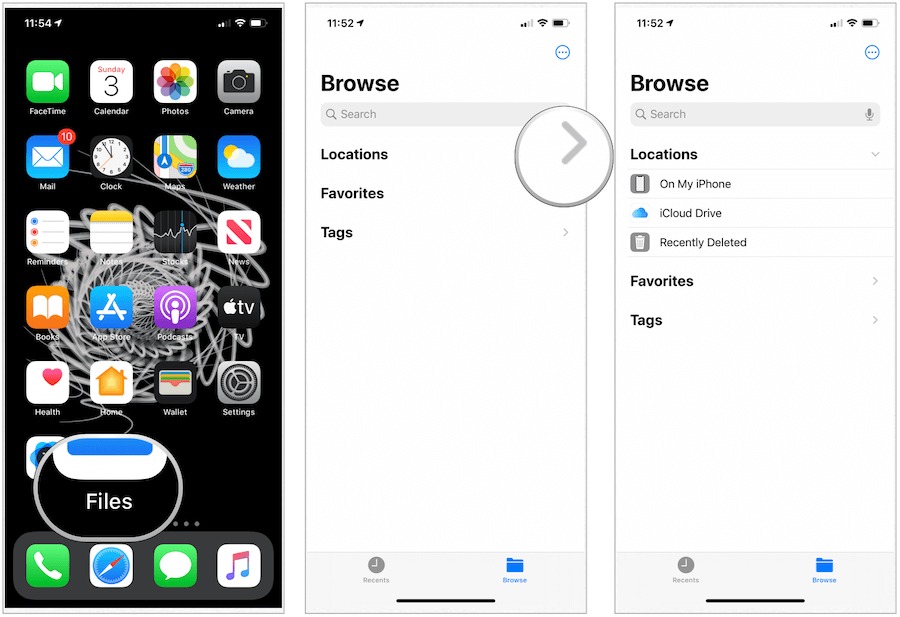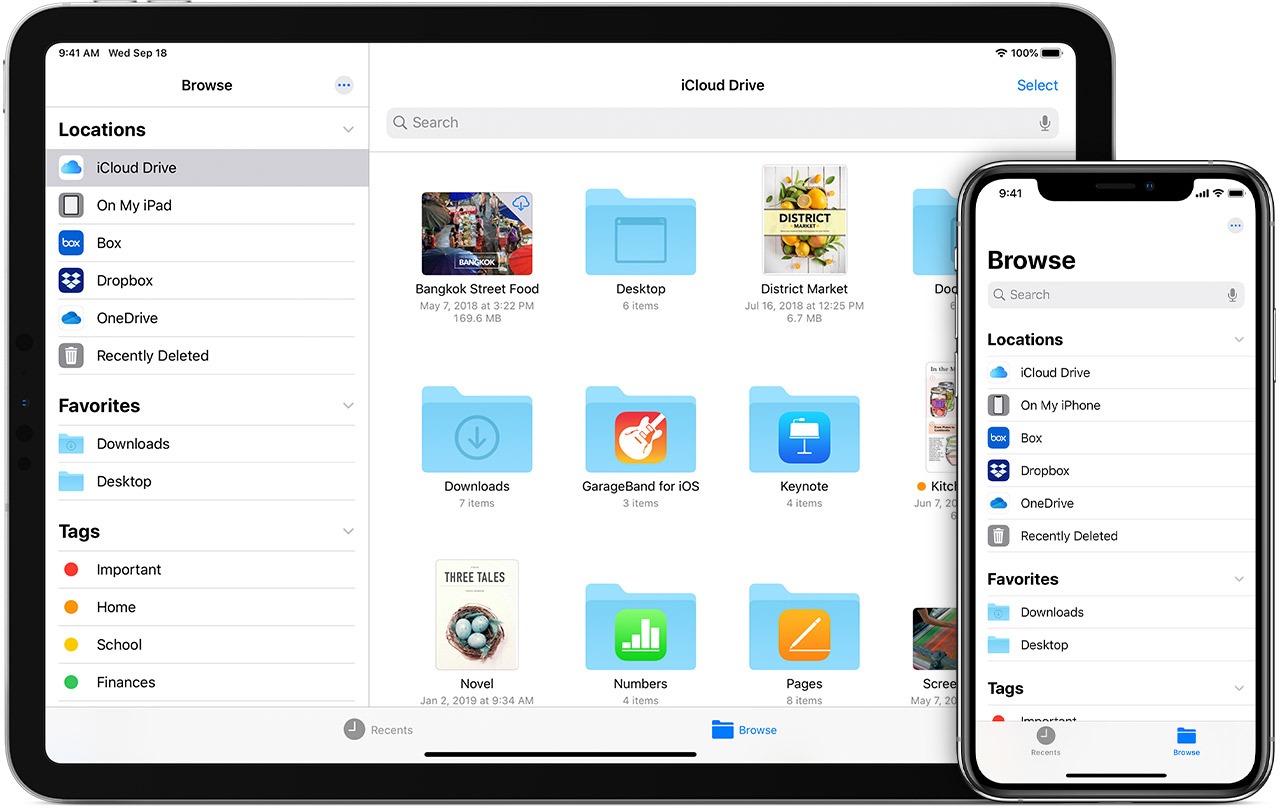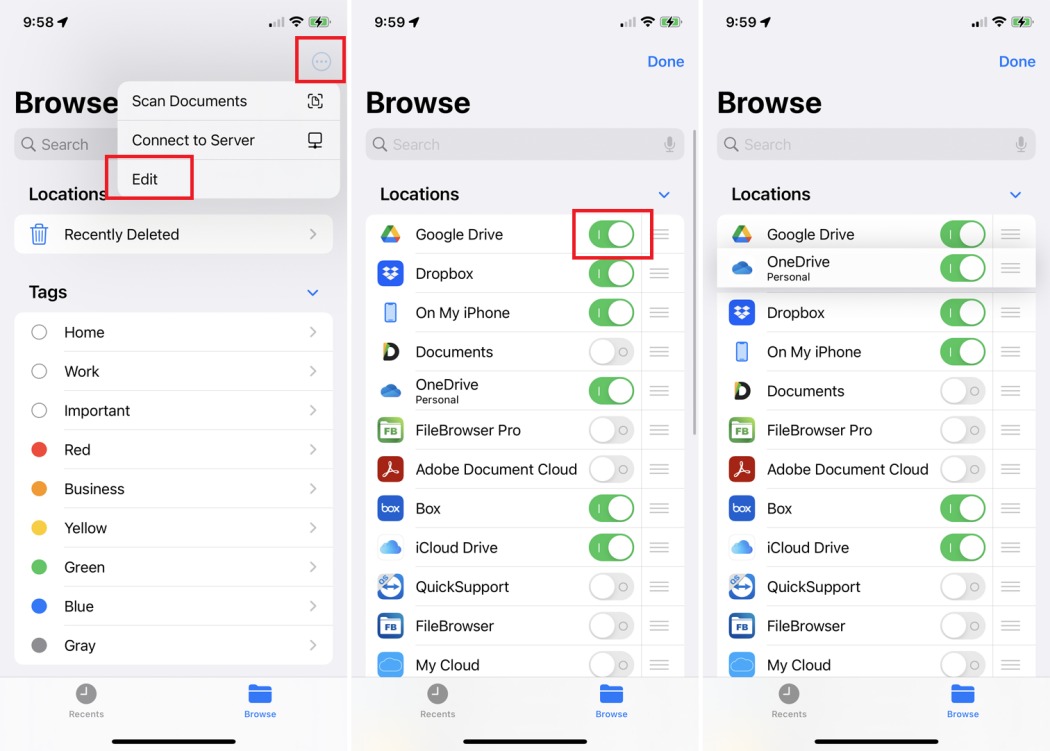How to get to files on iPhone
Documents, photographs, movies, and audio stored in numerous locations can be found via the Files app for iPhone and iPad. The Files app, which was launched with iOS 11, supports local and iCloud information, as well as documents stored on third-party services such as Google Drive and Dropbox. Here’s how to get to files on iPhone, let’s follow us to find out right now!
Connect the Files App to Services
When you first launch Files, you must activate and connect to the services you use. Tap the ellipsis icon at the top to open the Edit menu. The program displays all of the file storage providers that are available. Turn on the button for any additional online sites. You can also drag your favorite services into a new order by pressing down on the hamburger icon next to them.
Sign in by tapping the name of the service you want to load. When you do this for the first time, authentication is required to view objects in this folder. In rare circumstances, you may receive an authentication warning, indicating that you must first launch the mobile version of the app before using it in Files. Do this for every new site you add.

You can also use the Files app to access documents downloaded in Safari. A Downloads folder will show in the Files app if you download a PDF, audio file, or document via Safari. When you select On My iPhone or On My iPad, you will see folders for different apps and services on your device, as well as a Downloads folder. To access any files saved from Safari, navigate to that folder.
Connect to an External Storage Device: How to get to files on iPhone
You can use a USB stick, SD card, or external drive to connect your device. To do so, physically connect the storage device to your iPhone or iPad using the appropriate adaptor connection. You may then use Files to access that drive and its contents. If you have a computer system or NAS, you can connect to it and access it via the Files app. Simply ensure that it supports and has SMB (Server Message Block) enabled, a universal network protocol that allows various systems to access and share the same files.
In the Files app, hit the ellipsis icon in the top right, then tap the Connect to Server command and enter the server’s name or IP address. (To access my Synology NAS, for example, I had to put some:/ followed by the NAS’s name and then.local, as in smb:/SynologyNAS.local.) Then input the device’s username and password.
I couldn’t connect to the NAS at first. I learned from a helpful web forum that I needed to adjust the maximum SMB protocol to SMB3. If you are having problems connecting to a server or NAS using the Files app, you should contact the vendor for assistance.
You can access an encrypted drive that is either deeply related to your iPhone or iPad or one that is set up on your network. However, only APFS-formatted disks are currently supported. Connect your private storage device or connect to an encrypted network share to test this. Tap the Lock link after selecting the drive. Enter the drive’s password, then select Unlock to obtain access to the drive.
Locate and View Files: How to get to files on iPhone
You can search for files in many locations. Enter a word or phrase for the file you want in the Search window at the top. In response, the app scans your various locations and offers a list of search results.
If you frequently use the same folders, consider adding them to your Favorites list so you can access them easily in the future. Simply move the folder onto the sidebar by pressing down on it and selecting Favorite from the menu. Any folder marked as a Favorite will appear in the Favorites area on the left-hand sidebar.

Inside the program, recently accessed files can be readily discovered. View files that have recently been added, moved, or browsed by tapping the Recents entry in the sidebar. Tap a specific service in the Files app to see the folders and files saved on it. When you tap a file to open it, the software downloads and shows it. This method allows you to examine documents, PDF files, photos, audio files, and videos. Photos and other static images can even be modified using the drawing and coloring tools built into the program.
Organize Your Files
You can do basic file management operations such as copying, moving, and deleting files. To view your saved folders and files, log in to one of your online storage services. Press down on a single file’s thumbnail to run a command on it. You can copy, copy, move, rename, preview, tag, share, or delete the file from the menu.
On an iPad, tap the Select link in the upper-right corner to run a command on multiple files. Tap the checkbox next to each file you want to include. The links at the bottom of the screen allow you to share, duplicate, move, or delete the selected file. Tap Further to discover more options, such as Download and Compress.
File Tagging and Sorting
The Files app allows you to view the crucial characteristics of each file and even tag them. To examine the file type, size, creation date and time, author, and other characteristics, hold down a file and pick Info from the menu. You can determine the size, resolution, exposure duration, lens length, and ISO speed of a photograph.

Tap Show More and the app switcher to see all the data on the file if you want to add a tag to categorize it. Tap the Add Tags link at the bottom of the screen. You may then select a tag from the existing color-coded list or press Add New Tag to create a new one based on specified criteria, which will aid in your search.
You can now sort files in a folder by groups. Open a folder, tap the three-dot circle icon, and then select Use Groups. The files in the folder are organized into various groups, with Kind as the default criterion (file type). Tap the three-dot circle symbol and select Group By to adjust the criteria. The files can then be organized into groups depending on date or size. To undo the grouping, hit the icon again and uncheck the Use Groups box.
READ MORE






